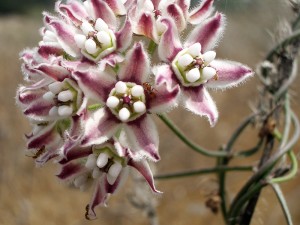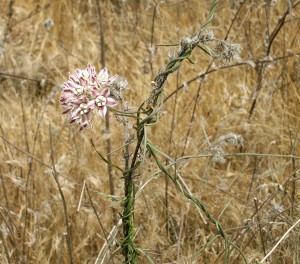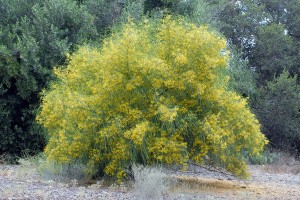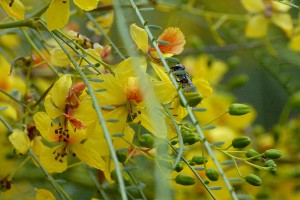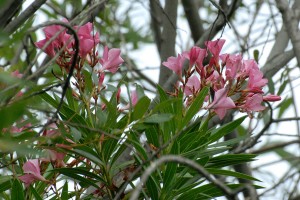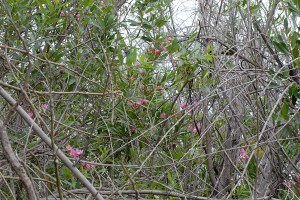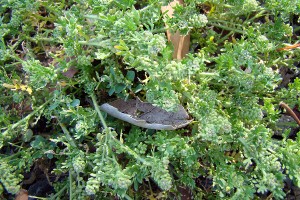We have four new additions to the BFS plant list.
- First is Climbing Milkweed, Sarcostemma cynanchoides ssp. hartwegii:
Sue Schenk spotted this native twining perennial in the East Field. S. cynanchoides ssp. hartwegii is a host plant for the Queen Butterfly (Danaus gilippus). As you might guess from its habit, S. cynanchoides ssp. hartwegii can be a nuisance in some settings by climbing on fences, small trees and shrubs, and spreading into gardens and cultivated fields.
- Our second addition is Mexican Palo Verde, Parkinsonia aculeata:
We have two P. aculeata trees at the BFS – one next to the wash, just below the Lowell Street gate, and one outside the fence just west of the main BFS entry gate. These plants have been here for a long time, but had never made it onto the plant list. We realized that we didn’t have P. aculeata on the list when Jonathan Wright spotted a Centris sp. bee, which is a Palo Verde specialist at the BFS. The Mexican Palo Verde is widely used in landscaping for its graceful form, attractive flowers and green bark, and tolerance to drought. It is, however, considered invasive and has naturalized over much of the Southwest.
- Oleander, Nerium oleander:
Several Oleanders are planted along the outside of the BFS fence, and one (which will soon be gone) has established itself among the willows on the eastern side of pHake Lake. Oleander is probably familiar to all BFS users; it is widely used for SoCal landscaping, especially along the local freeways, for its attractive appearance and tolerance of drought and poor soil. Do treat Oleander with respect – all parts of the plant are highly poisonous.
- Lesser Swinecress, Coronopus didymus:
Jonathan Wright spotted this little prostrate mustard growing on the wood chip mulch outside the BFS fence. C. didymus, which is commonly known as Lesser Swinecress or Lesser Wartcress, is native to Eurasia, but has spread throughout the world. In the U.S., it is found at lower elevations everywhere except the northern interior west. C. didymus has been widely used in folk medicine and is currently being investigated for possible medical use for its anti-inflammatory, anti-oxidative, and other properties.
